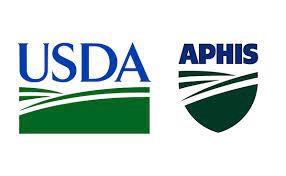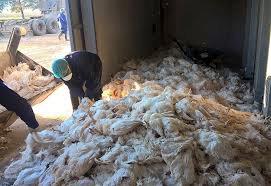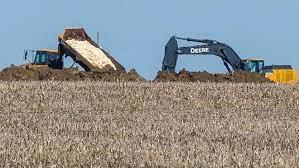 Recently, Dr. Rosemary Sifford, Chief Veterinary Officer for the USDA Animal and Plant Health Inspection Service (APHIS), noted that Veterinary Services is preparing a risk assessment report on highly pathogenic avian influenza (HPAI). This document is intended to guide producers to implement meaningful practices to exclude infection from their flocks during the ongoing HPAI epornitic. Dr. Sifford stated, “We are in the midst of doing an analysis on all the data we’ve collected on the affected facilities to make some statement about the level of risk and what are factors that create a higher level of risk.” The Agency intends to release a report in 2023.
Recently, Dr. Rosemary Sifford, Chief Veterinary Officer for the USDA Animal and Plant Health Inspection Service (APHIS), noted that Veterinary Services is preparing a risk assessment report on highly pathogenic avian influenza (HPAI). This document is intended to guide producers to implement meaningful practices to exclude infection from their flocks during the ongoing HPAI epornitic. Dr. Sifford stated, “We are in the midst of doing an analysis on all the data we’ve collected on the affected facilities to make some statement about the level of risk and what are factors that create a higher level of risk.” The Agency intends to release a report in 2023.
To date, the involvement of APHIS has been totally reactive to outbreaks and the Agency has responded with the depletion of close to 9 million turkeys on 207 farms in 7 states and 42.3 million hens at a total of 33 locations. Ninety-five percent of the losses in the egg industry have occurred on 18 large complexes with flocks ranging in population from 0.5 to 3 million hens.

Dr. Rosemay Sifford |
APHIS has apparently collected data relating to field and molecular epidemiology from the initial cases extending from February through March 2022. This data set would have comprised seven large in-line complexes ranging from 1.2 to 5.0 million hens requiring depletion of 18 million birds. Adequate time has passed to have produced and circulated an interim report providing firm recommendations to rectify any obvious deviations from accepted biosecurity. This may have prevented some outbreaks on 14 subsequent complexes requiring depletion amounting to an additional 25 million hens. A preliminary opinion with guidance during mid-April 2022 was not an unrealistic goal and would have been far more valuable than a more detailed and comprehensive report promised at some time in 2023.
In reviewing available releases, APHIS failed to provide a meaningful evaluation of risk factors contributing to the 2015 outbreak. It is feared that the promised 2023 version will be more (or less) of the same despite advances in molecular epidemiology. Given the prevailing APHIS mindset and neglect of urgency or a consideration of the financial consequences of HPAI the industry can expect no better guidance than was provided following the 2015 epornitic.
Dr. Sifford and her subordinates have failed in their primary responsibility of protecting the Nation’s flocks through application of available knowledge and experience to prevent disease. The cost of outbreaks to the public sector including depopulation and indemnity to flock owners is immense, requiring consecutive tranches of funding from the Commodity Credit Corporation, the USDA bottomless piggy bank. Costs to consumers in the form of triple-digit percent retail increase in prices during a time of inflation have added substantially to the financial impact of Avian Influenza.

The need for a preliminary epidemiologic evaluation is evidenced by the fact that outbreaks have occurred on egg production complexes with apparently high standards of both structural and operational biosecurity as followed by the industry. This may imply that there are mechanisms of transmission that have yet to be identified. If APHIS does not have the imagination, determination, resources or personnel to conduct the required field and molecular studies then these should be outsourced to Land Grant universities or the CDC with APHIS coordinating studies among federal and state agencies and academia. Conducting a telephone survey as contemplated, is a simple and inexpensive, but totally inadequate approach to defining the epidemiology of the 2022 HPAI epornitic.
 If it emerges from a structured investigation that current structural and operational biosecurity procedures, if followed, are inadequate to prevent introduction of infection then alternative and additional modalities are required. If deviations from accepted biosecurity (“make-belief” or “biosecurity theatre”) are responsible for outbreaks, as implied in the APHIS statement by Dr. Sifford then specific recommendations should be re-emphasized with compliance linked to indemnity. The industry needs to be re-informed of risk factors and deficiencies in order that corrective action can be taken. If however the epidemiologic investigation of approximately 15 outbreaks occurring on in-line egg-production complexes suggests previously unrealized areas of vulnerability, the industry needs to know of these novel risk factors to enhance protection and reduce the probability of exposure.
If it emerges from a structured investigation that current structural and operational biosecurity procedures, if followed, are inadequate to prevent introduction of infection then alternative and additional modalities are required. If deviations from accepted biosecurity (“make-belief” or “biosecurity theatre”) are responsible for outbreaks, as implied in the APHIS statement by Dr. Sifford then specific recommendations should be re-emphasized with compliance linked to indemnity. The industry needs to be re-informed of risk factors and deficiencies in order that corrective action can be taken. If however the epidemiologic investigation of approximately 15 outbreaks occurring on in-line egg-production complexes suggests previously unrealized areas of vulnerability, the industry needs to know of these novel risk factors to enhance protection and reduce the probability of exposure.
Immediate questions that arise include:
- Can HPAI be transmitted via the aerogenous route? If so, over what distance? Under what climatic conditions, including wind velocity, temperature and humidity?
- Are domestic birds, other than migratory waterfowl and small mammals capable of serving as the reservoirs and disseminators of H5N1 avian influenza virus? If so, what species are involved and the duration of their shedding?
- Under what conditions does H5N1 virus remain viable on soil and impervious surfaces with and without exposure to sunlight or extremes of weather?
- What characteristics of the H5N1 strain contribute to greater infectivity, broader host range and persistence in the environment?
- What deficiencies occurred in accepted standard structural and operational biosecurity on affected complexes with an evaluation of their contribution to outbreaks?
- Why have so few small cage free contract egg producers been affected?
- Why have so many turkey farms been infected but the broiler industry has remained unscathed?
- Is APHIS attempting to eradicate (“stamp out”) an endemic infection? If so alternative approaches including vaccination should be considered –but that is another Editorial!
Collectively, USDA-APHIS, ARS and NVSL together with Land Grant colleges, universities, in cooperation with the biopharmaceutical industry have made great strides in the rapid diagnosis of avian influenza. Based on appropriate planning by APHIS, the response to outbreaks and cooperation between state and federal agencies has been expedited since the 2015 outbreak, possibly limiting spread of infection.
Given the resurgence in outbreaks of HPAI, APHIS is urged to expedite a review of data gathered and to concentrate on factors leading to outbreaks on the 15 largest in-line complexes in order to protect the remainder of the industry. This should be a top priority and cannot be deferred until 2023.
As with any Editorial in EGG-NEWS, interested subscribers are invited to provide supporting or contrary views and opinions for review and publication. A response by APHIS would be especially welcome.
Simon M. Shane